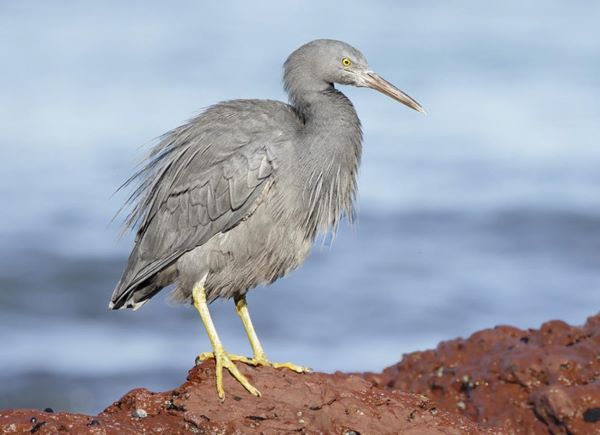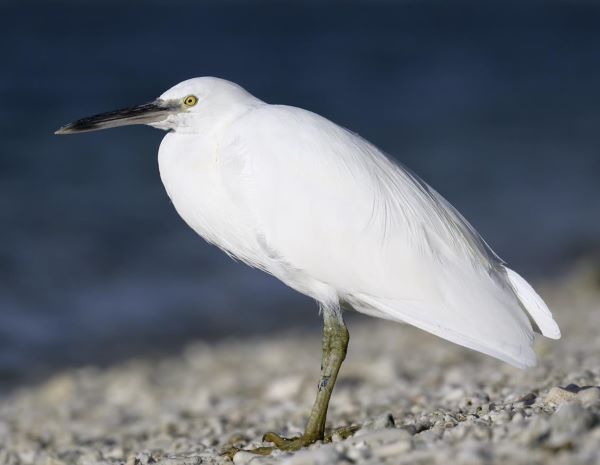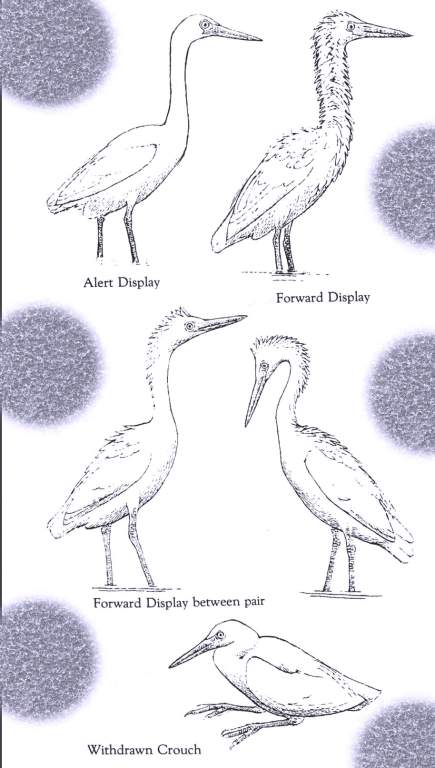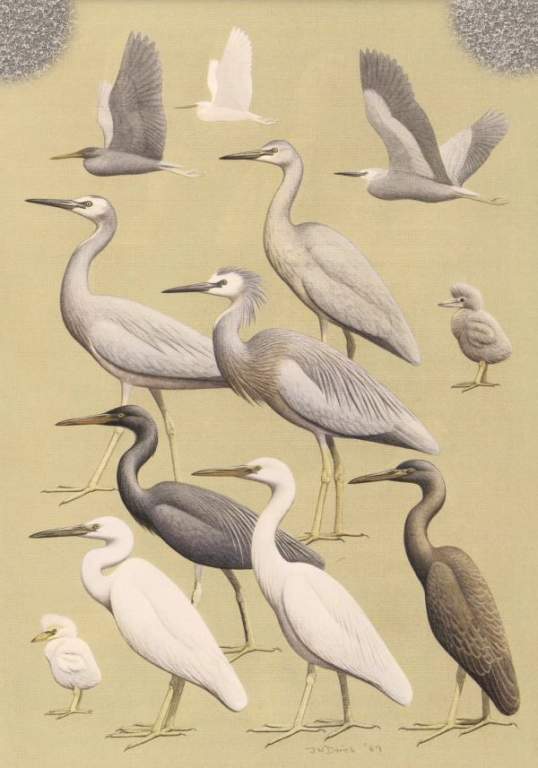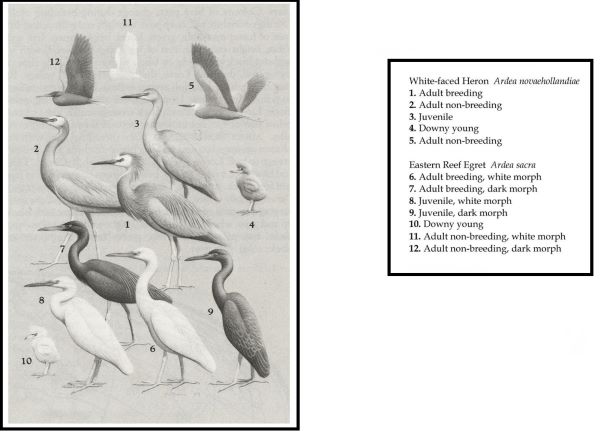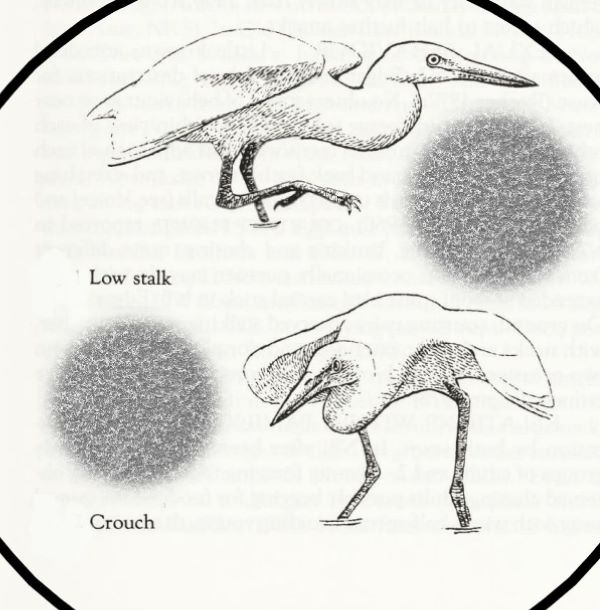Family: The Eastern Reef Egret (Ardea sacra) belongs to the heron family Ardeidae in the genus Egretta.
Habitat: The eastern reef egret is an exclusively coastal bird and abundant on many Pacific islands. Coral reefs, tidal flats, and rock platforms are its foraging grounds. Eastern Reef egrets occur in two forms: the more common in tropical zones, and the dark or slate-grey, which is more numerous in temperate regions. The two species breed together, resulting in broods that contain both white and dark birds. The existence of pied birds can occasionally confuse the single set of genes that determine color-type inheritance. The white phase of the Eastern Reef Egret is more common in the tropics. In coastal and estuarine settings, feed mostly at low tide in shallow water; in pools and channels in rock platforms, mudflats, and river banks. Additionally observed to jump, hover while jabbing at the water with its foot, gather fish from the surface, clamber and scrounge in trees among nesting noddies, steal fish from Crested Terns Sterna bergii, and retrieve fish that terns have regurgitated.
Identification: the seasonal variations in the color of exposed areas and plume growth. It has either slaty grey or pure white plumage, depending on the color morph. Both adult sexes are identical. However, the male bird is a little larger. Slender plumes on the nape, back, and breast. White form: plumage uniformly white; bare skin on face green-yellow; eye yellow; bill yellow; sometimes with upper mandible slate grey; short legs and feet yellow-green or -grey. Grey form: plumage slate-grey or blue-grey; white stripe on throat; bill is slate-brown, tending at times to grey, upper mandible is usually darker. The immature bird is similar to adults but has no plumes; the grey phase is paler. The ratio of dark to white variants changes with latitude and maybe with habitat. The downy young are white or grey in the phase of adulthood.
Aging: Juvenile plumage is preserved for roughly a year. In mottled juveniles of white morph, the full or portion of the plumage is white at the first adult molt and becomes pure white after succeeding molts.
Diet: Each bird hunts alone in a feeding area from which it excludes others. It is a versatile predator that primarily eats tiny fish up to 15 cm long, as well as occasionally crabs and insects. It even raids tern nests, stealing fish that are carried in to feed the young and snatching off nestlings. Birds feeding in the shadow may have partially open wings or flick them when stabbing at fish.
Behavior: When the tide is low, Eastern Reef egrets leave their loosely colonial roosts or nests in trees near feeding grounds and spread out along the exposed shore. They are secretive but businesslike in their foraging.
It also hops from place to place in brief flights, landing upright and glancing about or stooping low. It crawls along, virtually gliding over rocks and coral. It does this by hunching down on its small legs and creeping.
When lunging after food, Eastern Reef egrets may plunge into the water and partly submerge. Because seawater is clear at most feeding sites, they commonly crouch to make themselves inconspicuous and exploit the element of surprise in a sudden strike. That is effective, given the high rate of capture: about half the strikes are successful.
In pools with much seaweed, an egret may stir the plants with its foot to uncover hidden prey; it also stirs silty water. When fish resurface in deep water, they may fly, skimming the surface, to catch them in their bill.
Vocalizations: The eastern reef egret croaks loudly. Harsh guttural cries occur primarily during breeding seasons.
Nesting and Breeding: Eastern reef egret nesting and breeding occur at any time of the year, mostly in August and April. Nest a simple platform of sticks in a tree, on a low shrub, or the ground in loose colonies. The species nests in ancient buildings’ cavities, amongst palm trees and mangroves, or in jungle colonies all year round to lay clutches of eggs.
Eggs and Incubation: elliptical to oval shape; texture is rather coarse or closely-grained; it is not shiny and occasionally has limy excrescences; the inside of the shell is light green. The bird lays 2–5 eggs that are pale green, oval, and about 46 x 35 mm. The incubation period is about 26–28 days. Young fledge in 33–35 days.
Other Names: The bird is also known as Reef Heron, Sacred Heron, Eastern Reef Heron, and Pacific Reef Heron.
Size: The eastern reef egret measures about 610–650 mm in length, along with an average weight of 390-410 grams and a wingspan of 90–110 cm.
Distribution: eastern reef egrets are found in coastal areas of Australia (and offshore islands, including the Torres Strait Islands), except in southern Victoria and Tasmania. It is also found in Japan, New Zealand, and the western Pacific.
Races: There are two races. Only one small race is found in Australia.
-
s. sacra: This race is found in the coastal south of Bangladesh and the Andaman Islands, the Ryukyu Islands, the south of Japan, Australasia, Melanesia, and the Tuamotu Archipelago.
-
s. albolineata: This race is found in New Caledonia, including the Loyalty Islands.
Social: Although in NZ, solitary throughout non-breeding periods; feed alone, alone, or in scattered groups spaced along the beach, each individual keeping feeding territory; gregarious or in pairs during the breeding season; singly, in pairs or family groups at other times.
Movements: There is no evidence of significant seasonal mobility.
Read More: Little Egret (Ardea garzetta)
